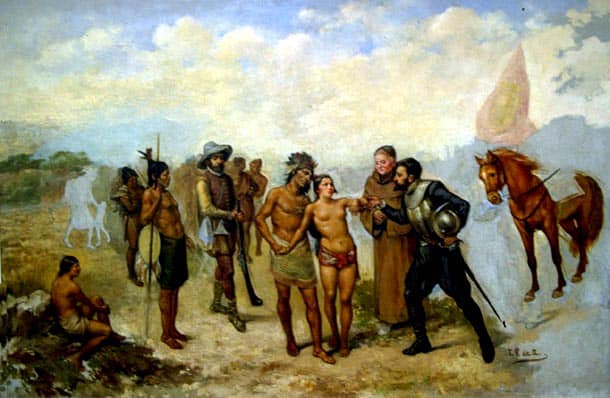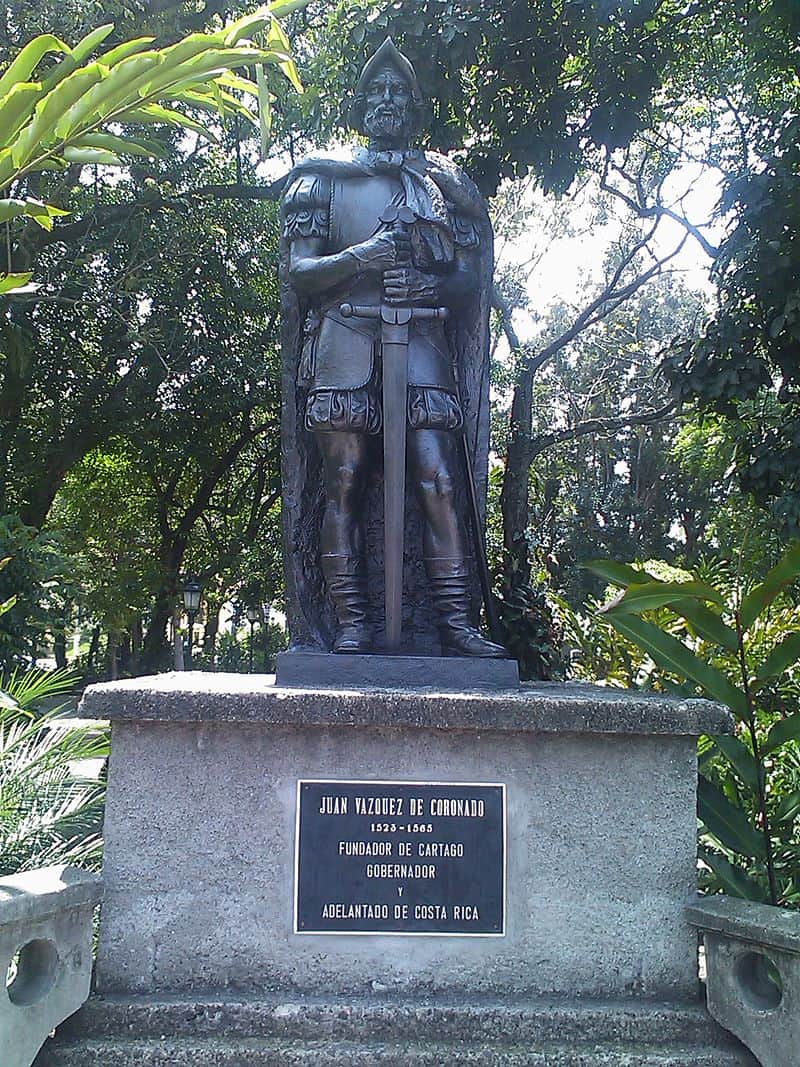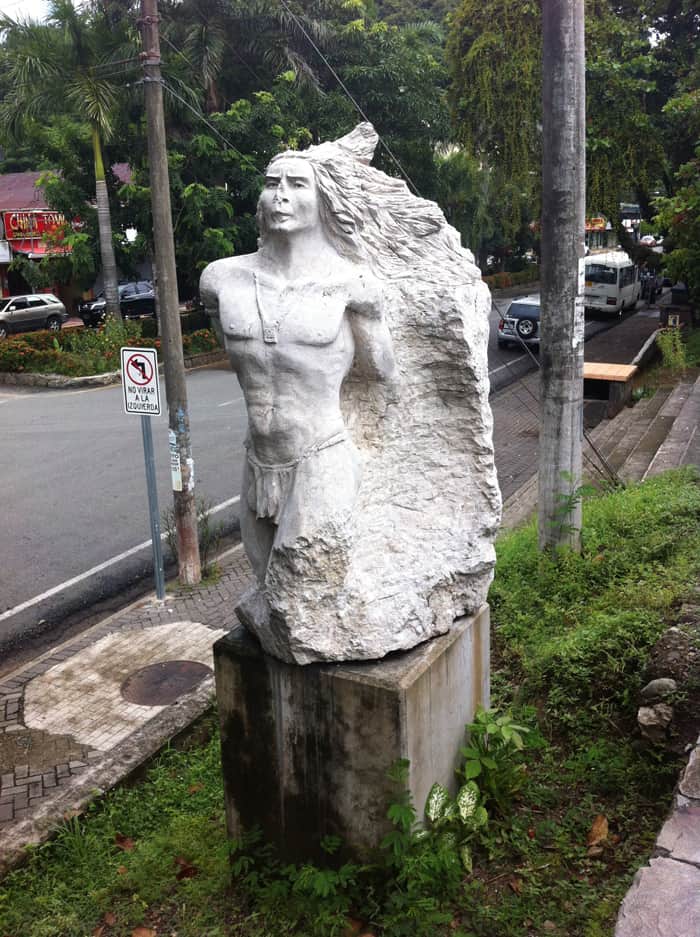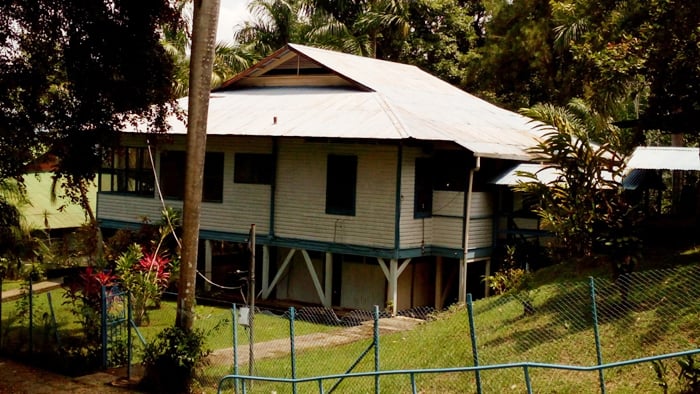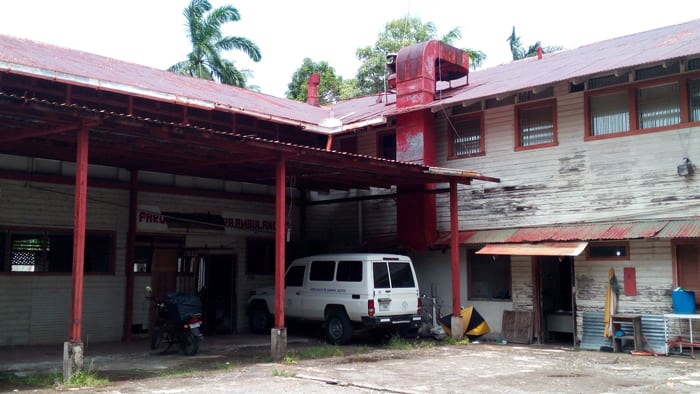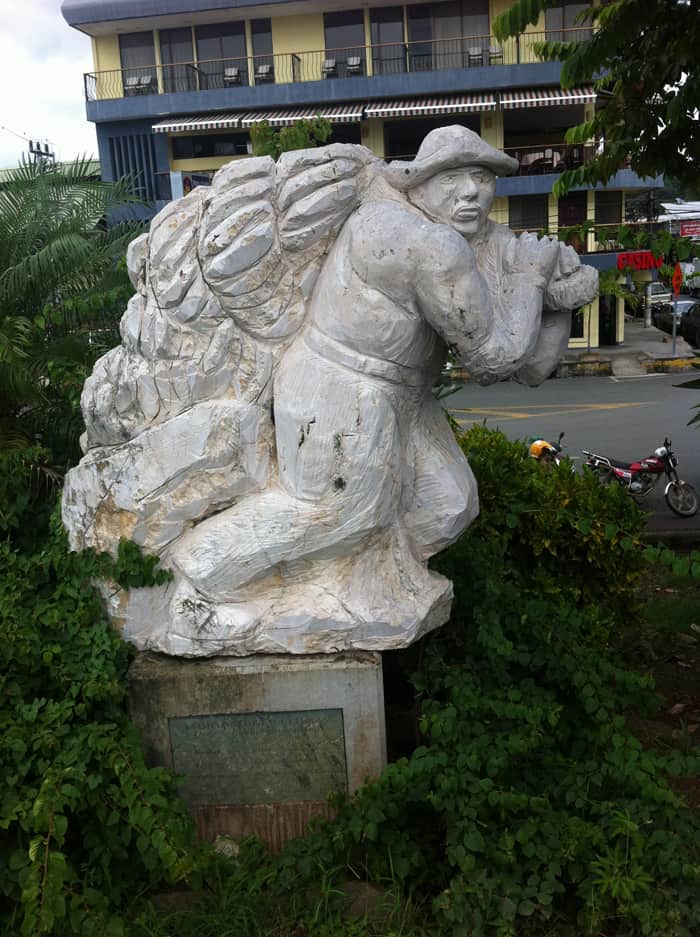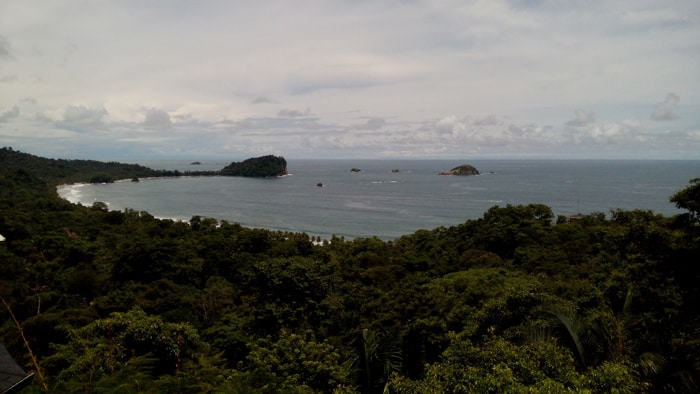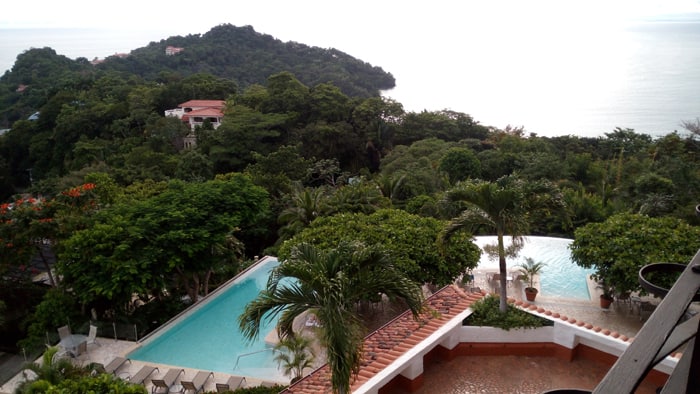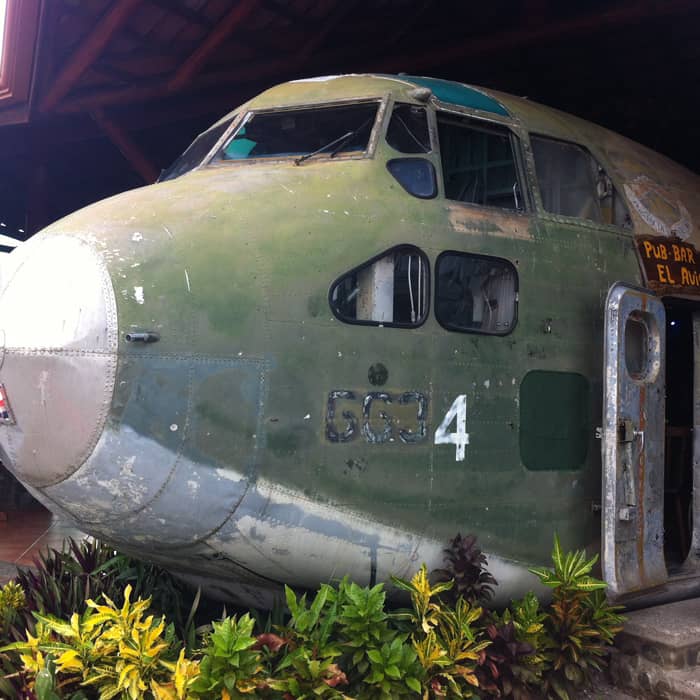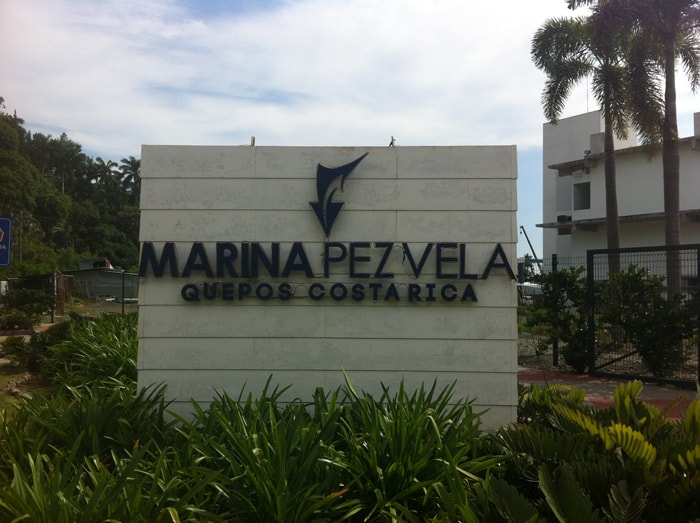When the Spanish first laid eyes on this spectacular coast, its masters were the Quepo (sometimes called the Quepoa, or “los Quepos”), said to be a warlike people who had migrated here from Colombia.
In 1519, the Spanish explorer Hernán Ponce de León (nephew of Juan, the discoverer of Florida) scouted Costa Rica’s Pacific coast by sea, from Punta Burica on the modern border with Panama to the Golfo de Nicoya, and he sailed into this lovely, sheltered bay. But on the shore he was greeted by a show of hostility from hundreds of angry natives shouting and waving weapons in the air.
Ponce de León wisely continued on his way without attempting to land. It appears to be mostly myth that his more famous uncle had searched for a “fountain of youth” — but what neither of them was searching for was a sudden death.
The Spanish
Four years later, in 1523, a Spaniard named Gil González Dávila came here the hard way, on foot. He met the natives, exacted tribute from them, and reported to his superiors that this area had more gold than 13 of the 14 other chiefdoms the Spanish had encountered.
Yet it took 40 years for the Spanish crown to ask Juan Vázquez de Coronado to conquer and colonize this Costa Rican backwater, which he proceeded to do in 1563. He sent 70 soldiers from the Central Valley on Jan. 27, but they found the going very difficult, and were threatened by hunger and thirst.
On Feb. 7 the invaders approached the “Provincia de Quepo” exhausted, injured and hungry, according to a history by Oscar Monge Maykall called “The Real History of Quepos.” Vázquez managed to arrange a peaceful meeting with the local chief, Corrohore, after 60 natives brought the Spaniards gifts of pork, corn and fruit.
This friendly meeting established an alliance between the Quepo and the Spaniards, and opened the way to Spanish domination of the region. The same year, 1563, Vázquez de Coronado wrote that this was “a healthy province, with good skies and soils, good air and water, with very fertile earth abounding in gold, with clothing and a great abundance of resources like corn, beans, pumpkins, cotton, yucca, banana, zapotes and all kinds of fruit.”
He also said the Quepo were “the cleanest and most intelligent people” he had yet encountered in this country.
The price of this alliance was that the Quepo now wanted Spain’s help in attacking the Couto, their mortal enemies, who had raided, killed and enslaved their people, including the chief’s sister, Dulcee (or Dulcehé).
On Feb. 26, 1563, Vázquez sent 38 men led by one named Marmolejo to try to talk the Couto into submission. But these envoys were severely thrashed.
“The Indians, outstanding warriors, ambushed them and with many spears, sticks and stones, handed them a great defeat, gravely injured 20 soldiers and drove them out of their stronghold, forcing them to retreat quickly, as there were many attackers,” writes Monge Maykall.
Vázquez de Coronado, receiving word from two messengers that Marmolejo’s party was at risk of annihilation, led a party of 20 men, some on horseback and some on foot, to rescue the vanguard and deal with the warriors threatening them.
The story gets a bit hazy at this point — one legend says the Couto were terrified by men on horseback, and another legend says Vázquez captured the stronghold by force without telling his soldiers to spill any indigenous blood. But in any case the only native people who had stayed behind were warriors, and they were overwhelmed by the foreigners.
Negotiations ensued, and soon the Couto agreed to release the captive Quepo princess Dulcee and the other slaves they had captured.
The Banana Company
Fast-forward three and a half centuries, and Costa Rica has become the world’s first “banana republic.” A U.S. businessman named Minor Keith finished a railroad from San José to Limón in 1890, and under the banner of the United Fruit Company he became extremely rich exporting the relatively unknown but super-popular banana to the United States and Europe.
A Panamanian blight struck the Caribbean banana plantations in the 1920s, and United Fruit started looking for greener pastures. Contrary to popular belief, however, it did not start the banana business in Quepos.
Here, in the early ’20s, a man named Agathon Lutz Steiegele saw the potential for this crop, and he started buying up land and planting the golden fruit under the banner of the Pirrís Farm Trading Co. Between 1923 and 1930, he built up his plantations and constructed a crude wooden dock in Boca Vieja, the first settlement in what is now Quepos.
In 1926 he started shipping the fruit to San Francisco and Vancouver. He also shipped bananas to Puntarenas, where they were taken by rail to Limón and exported to the eastern U.S. and Europe.
The United Fruit Company bought out the Pirrís operation in 1934 and made it a major center of Pacific operations for the banana giant, along with Golfito farther south. Thousands of people began migrating to Quepos for jobs, many of them from Nicaragua, and the area became a hotbed of economic activity.
A new dock was built and went into operation in 1939. In 1940 the banana company (known today as Chiquita) opened a hospital in the “American Zone” where much of the management lived, behind today’s marina.
“At that time, in what is today downtown Quepos, there was absolutely nothing,” a resident named Misael Murillo is quoted as saying in Monge Maykall’s history. “Everything you see there today, when I went through here before 1938, it was a huge mangrove.”
United Fruit cleared the mangroves, brought in landfill and began building what is today downtown Quepos. A railroad was built, big ships sailed in and out of the new port, and the town flourished.
But massive flooding in 1954 and 1955 devastated local plantations.
“By 1956, absolutely nothing was left of the crop that gave life to this region,” Monge Maykall writes. “The excellent conditions of the past were destroyed. An economic crisis of colossal proportions began. The infrastructure that was formerly synonymous with glory and vigor deteriorated rapidly.”
Banana blight was also a factor, and labor strife, and the company knew it needed a new cash cow. It turned to a crop that was much less labor-intensive and less vulnerable to disease: palm oil.
Today, as you drive along the coastal highway near Quepos, you will see huge plantations of African palm, and the factories that turn their fruit into an oil used for cooking, margarine, soap and other products. It is one of the three big businesses in Quepos.
The other two are fishing and, of course, tourism.
Manuel Antonio National park
Why this national park is named Manuel Antonio is a matter of legend and speculation, but the most credible theory I have heard came from a park guide named Milenlli Araya Masís.
“There was a family called Vargas — Efraím Vargas was the grandfather — he moved to this place looking to grow bananas,” she said. “And they found this man that lived in there at [today’s] Manuel Antonio park, alone, without family.”
She said it was this solitary male, who was “always there” whenever the quepeños came back to scout out the property, who inspired the park’s name.
She noted that according to another legend, Manuel Antonio was a Spanish conquistador that the natives killed and buried on the beach.
“But there’s no record of a conquistador by that name,” she said. “My story is more plausible.” And she said there are still members of the Vargas family alive to vouch for it.
What is today Manuel Antonio National Park was long enjoyed by locals as a great place to walk in the forest and enjoy a day at the beach. A 78-hectare plot was eventually acquired by a local man named Alcibíades Zúñiga, who sold it to a foreigner named Noel Thomas Langhan, who in turn sold it to a Frenchman named Arthur Aime Bergeron.
But Bergeron, claiming this as private property, erected fences and hired guards to keep out the locals. In 1971, young people from Quepos tore down his main gate. Bergeron rebuilt it and brought in big dogs to deter another invasion. But that gate was torn down again the next day.
A local official named Pedro Gaspara Zúñiga visited the property with a couple of lawmakers, hoping to interview Bergeron, but he declined to meet with them. They want back to Quepos and drafted a declaration that would make Manuel Antonio a national park — public property open to all.
This initiative became law in 1972, ruling out private development in this incredible natural gem — and yet laying the groundwork for immensely lucrative commercial growth all the way from its borders to Quepos.
The Hotels
Between the new park and the old banana town sat an untapped gold mine for tourism: the ridge between the two. For various reasons, it made sense to build the main road along this ridge, and not along the beach, as in Jacó or Tamarindo or Puerto Viejo.
This ridge became a magnet for a series of high-end hotels, restaurants and shops that would permanently transform this region and its economy.
La Mariposa Hotel was the trailblazer, opening in 1973, just a year after the national park was established. Twenty years later came the Sí Como No, built between 1992 and 2000.
“Before us was the Mariposa, right after us was the Parador,” said Jim Damalas of Sí Como No. “Right now there are 71 restaurants in Manuel Antonio [registered on Trip Advisor]; back then there were four.”
The Costa Verde Hotel had also opened in 1988 with just three rooms, but under the imaginative direction of Allan Templeton, it would become an impressive little empire. In 2000 Templeton brought in an old U.S. Iran-Contra supply plane and turned it into a bar anchoring the El Avión Restaurant. Templeton also turned an old 727 into a unique hotel room, and he is still building other airplane-themed rooms at his hotel.
La Mansion Inn also opened in 2000, and today the area is thick with high-end hotels and condos, including the Makanda, the Tulemar, the Gaia and Villas Nicolas. Medium-priced hotels and backpacker hostels have also sprung up, making the area theoretically affordable to all.
Manuel Antonio eventually became the most popular national park in Costa Rica, and that was due in part to the ridge full of hotels that came to be known by the same name.
The marina
Meanwhile, back in Quepos, a Texan named Harold Lovelady obtained a concession under a 1999 marina law and started building what would become Marina Pez Vela. Work proceeded slowly, and he was ruined by the global recession of 2008, when he defaulted on loans from the banks that were backing him, and the bankers became the new owners.
All work stopped, and for a couple years there were 12 or 13 boats moored in the slips, while the rest of the marina project was just a pile of dirt, said Jeff Duchesneau, the current director of the marina.
But the economy recovered, and by 2012 construction was again underway in earnest. The marina was mostly complete by 2014, and tenants started moving in: restaurants, shops, tour agencies, car-rental companies, an airline.
Within a couple of years, the marina hopes to open — what else? — a luxury hotel with 50 to 80 rooms overlooking the marina and downtown Quepos.
I haven’t heard that any celebrations are planned, but three years from now will be the 500th anniversary of the day the Spaniards first laid eyes on this place.
It’s come a long way, baby. That old, hostile coast, too dangerous to land on, is now among the premier resort destinations in the world.
Author Karl Kahler
This article first appeared in 2016

